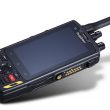In Hawkeye’s dreams
Like millions of Americans in the 1970s, I was a big fan of the television show “M*A*S*H”. Given my teenage mentality at the time, I found the offbeat and often irreverent humor appealing. I also liked the disdain for authority exhibited constantly by protagonists Hawkeye Pierce and Trapper John McIntyre, as I was going through a rather rebellious stage myself at the time. If they could question authority and get away with it, why couldn’t I? (This was when I found out that the television world has very little in common with the real world.)
But that wasn’t the only reason I enjoyed both the television show and movie of the same name. I also was fascinated by the primitive conditions under which the surgeons and nurses plied their craft. I have seen documentaries on the mobile surgical hospitals of the era, and Hollywood appears to have portrayed the conditions quite accurately. It’s a wonder that anyone ever survived a visit to a mobile army surgical hospital; yet, amazingly, seriously wounded soldiers during the Korean War who landed in such field units experienced a 97% survival rate.
I thought about those facilities — and the doctors and nurses who worked in them — as I read this edition’s cover story by MRT Associate Editor Mary Rose Roberts (“Lifeblood” on page 56). As Roberts reports, conditions have improved dramatically for both medical personnel and the people whose lives they are trying to save.
Triage — the system of assigning treatment priority based on severity of injury and chance for survival — is perhaps the aspect of at-the-scene emergency medical response most acutely affected by the influx of next-generation wireless technologies. Among other capabilities, systems being field-tested let first responders transmit vital data concerning patient conditions to doctors at hospitals, resulting in better-informed triage decisions, including where to transport patients based on their injuries, vital signs and capabilities of the area’s trauma centers.
One of the most enduring images from both the large- and small-screen versions of “M*A*S*H” is in the opening credits, when Hawkeye, Trapper John, et al., race up the hill to the helicopter landing pad to assess the condition of the unfortunate soldier who had just been flown in from the battlefield. If today’s technologies had been available then, they’d have known everything they needed to know even before the chopper became airborne. I don’t think they’d mind. Not only would it make them more effective surgeons, it would give them more time to drive Colonel Blake crazy.












